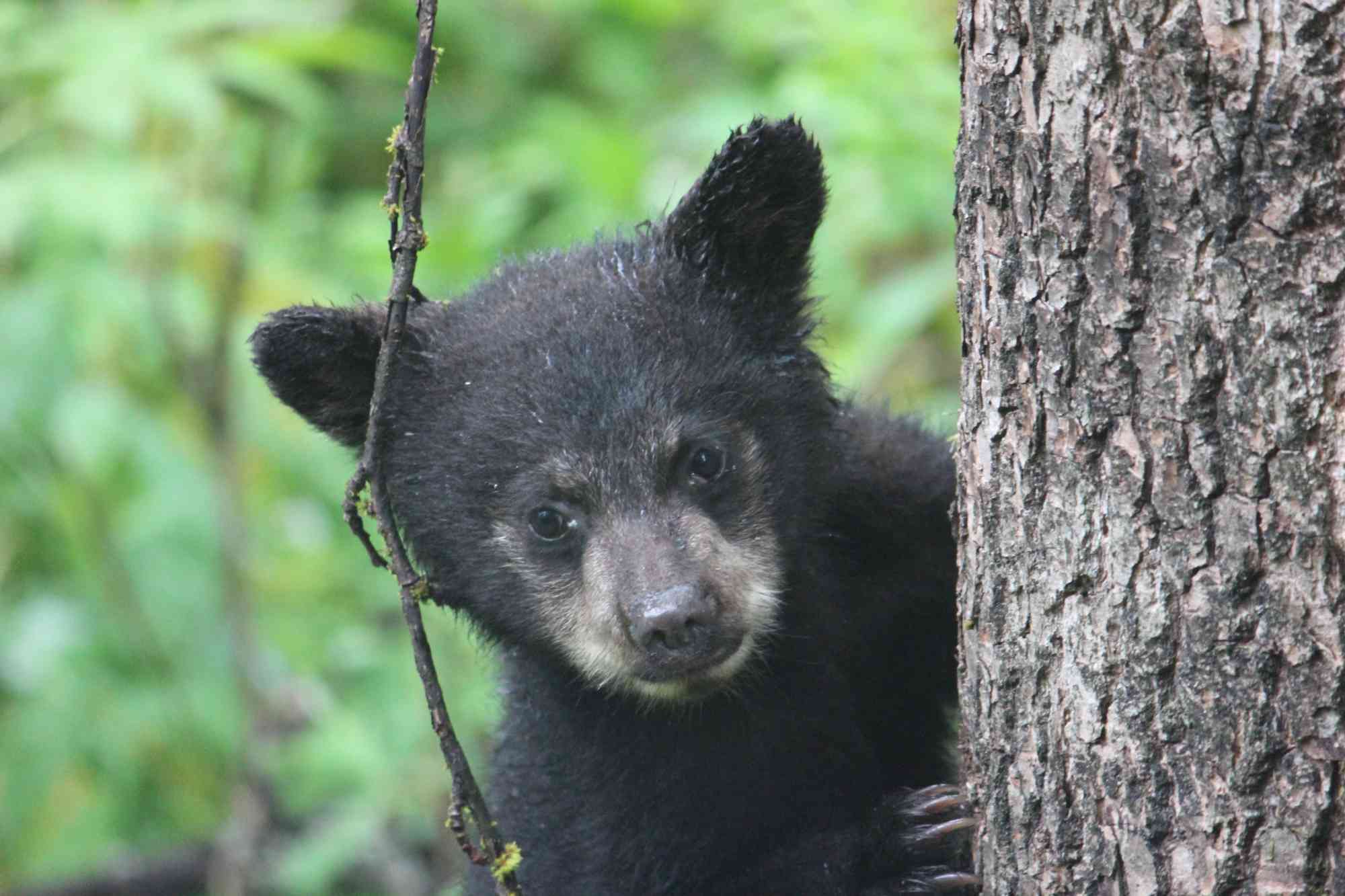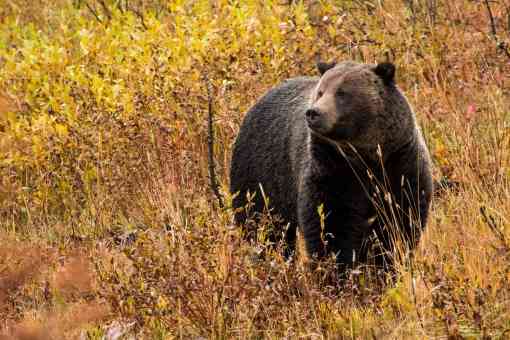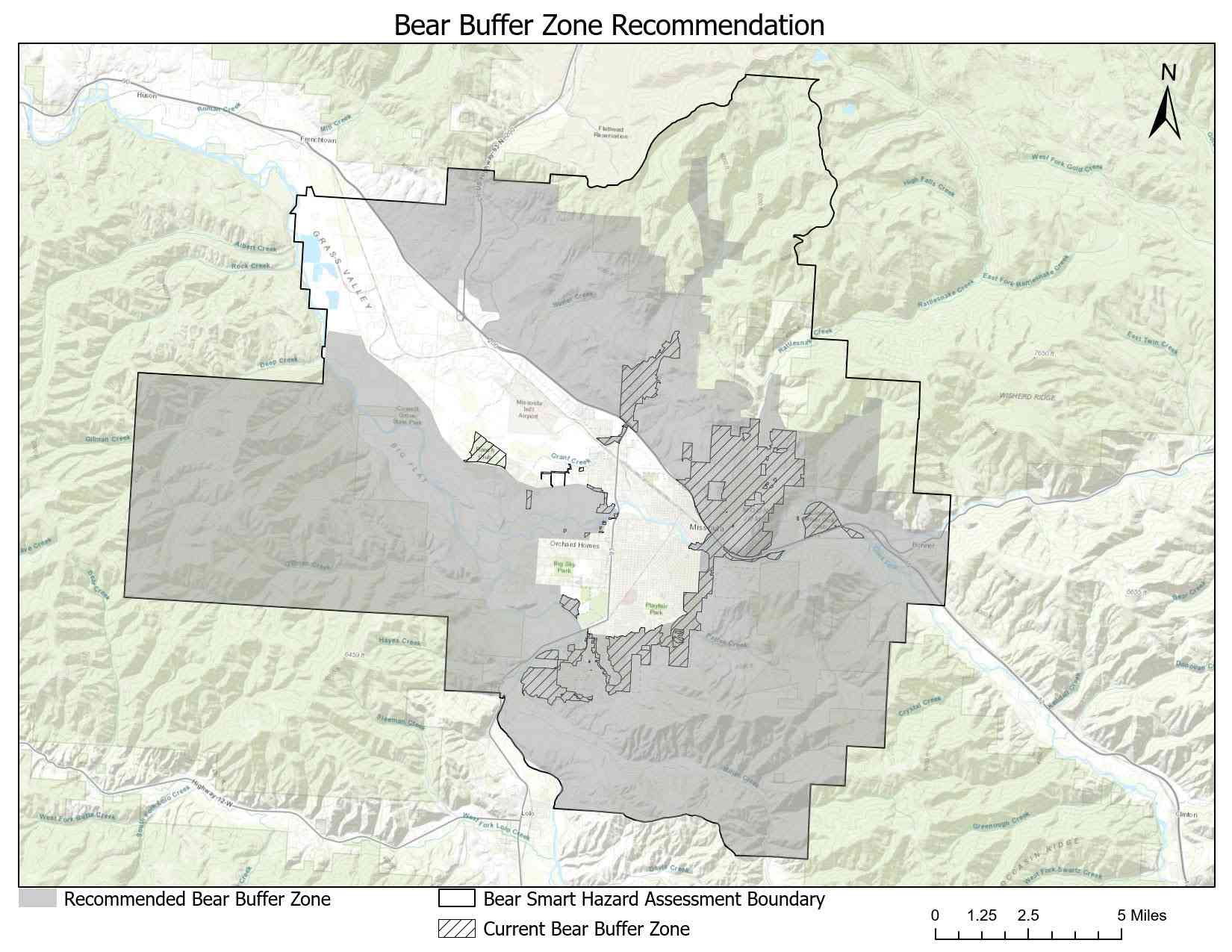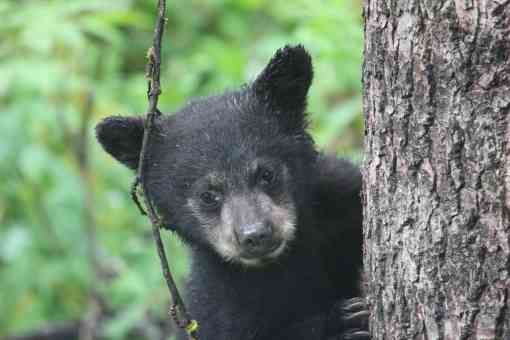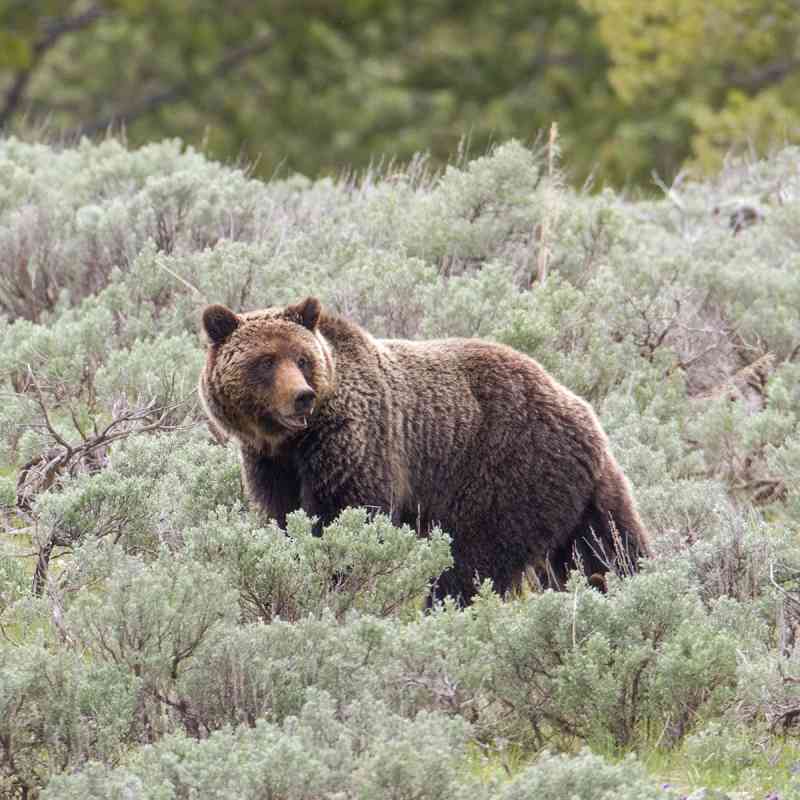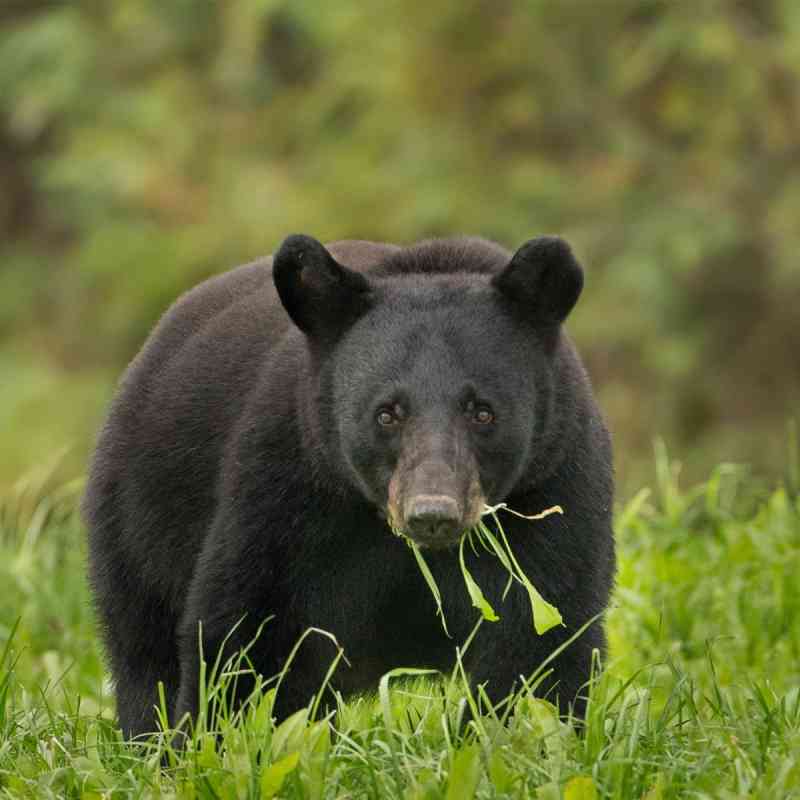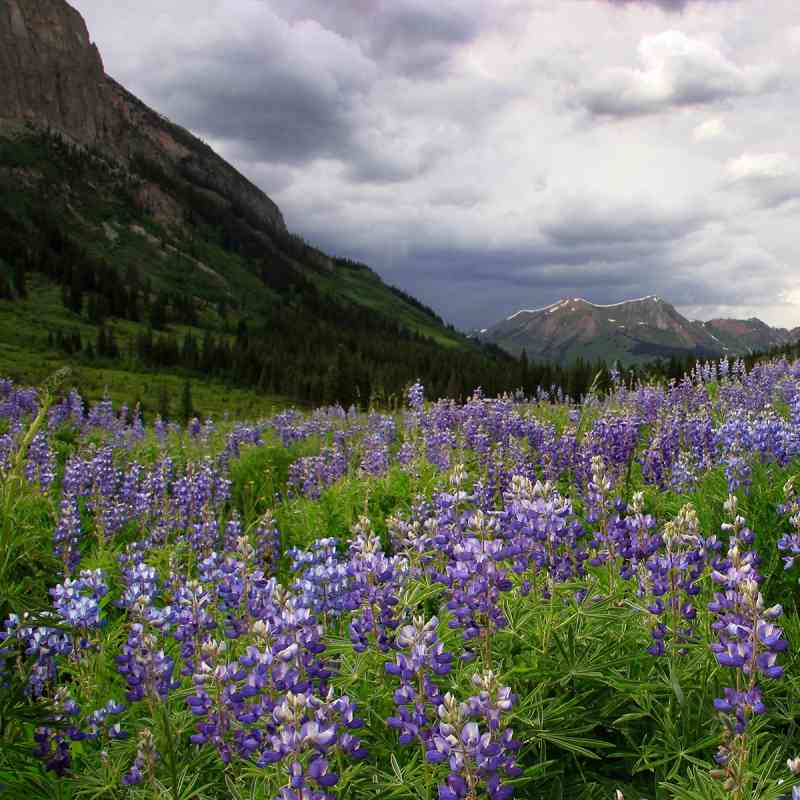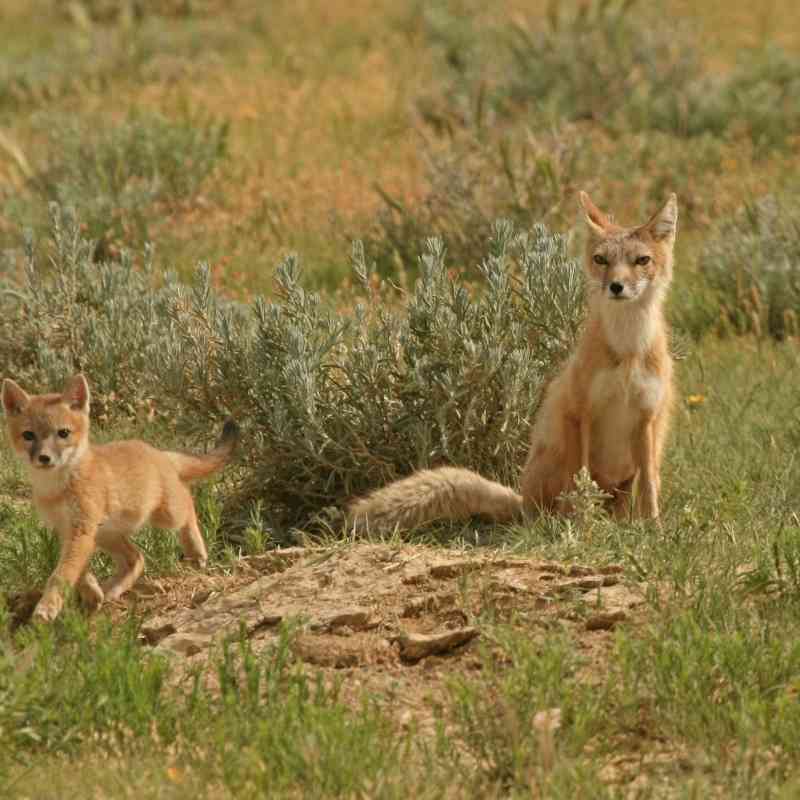Missoula, a western Montana city with a population of over 76,000 people, is situated amid the Rocky Mountains and is surrounded by wildlands. Neighborhoods extend from the center of the city out along riparian corridors like creeks and rivers. As people continue to move into areas where wildlife lives, and native species return to their historical range, finding ways to share important habitat is critical to minimize conflicts. Simple actions like securing garbage are proven to reduce conflicts between humans and bears. Read on to learn more about what the city and county of Missoula have done to keep bears and humans safe, and what you can do if you live in bear country.
Bears Will Be Bears
Both black and grizzly bears are native inhabitants of the Missoula area. Most are black bears, but in recent years grizzly bears have begun making their way south from the Northern Continental Divide Ecosystem. For grizzly bears to return to their historical habitat, they will have to be able to move around Missoula without getting detoured by the temptation of food sources, like human garbage, bird feeders and domestic fruit trees.
Bears utilize riparian corridors for food and cover. A good supply of natural foods — like chokecherry, serviceberry and hawthorn — grow throughout these corridors, and adjacent to and within Missoula neighborhoods. Unfortunately, the bears’ noses and bellies lead them to food sources associated with humans. An easy meal is irresistible for a bear looking to eat about 20,000 calories per day in the late summer and fall. While bears will always move through the area because of the natural food sources found around Missoula, we do not want them to find garbage and other attractants that can lead to trouble for both bears and people.
Working Towards Bear Smart
Defenders of Wildlife has partnered with other agencies, a local waste hauler and residents in the community to minimize human-bear conflicts since the early 2000s. This team of partners worked to develop the original city wildlife feeding ordinance and bear buffer zone in 2006. To this day, we continue to disseminate education and outreach through the Missoula Bears website, social media and elsewhere. Additionally, Defenders invests time and money in on-the-ground conflict prevention tools, such as bear-resistant garbage storage and electric fencing.
In 2021 there was an increase in concern from the community about human-bear conflicts due to recent grizzly bear activity on the outskirts of town. As a result, the Bear Smart Missoula Working Group was formed. The working group is a collaborative effort among concerned citizens, agency staff, bear specialists, local waste hauling companies, conservation groups — including Defenders — and city and county employees. Using the Canadian Bear Smart Community template, the working group developed a community hazard assessment and management plan, which were presented to the city and county. Most notably, we found that bears getting into unsecured garbage makes up approximately 49% of the human-bear conflicts in Missoula.
Missoula city and county approved a joint resolution on October 3, 2022, supporting bear smart policies for Missoula. To advance this effort, the Missoula City-County Health Board proposed changes to the current bear buffer zone and garbage storage. After multiple public hearings, the updated regulations passed the county on September 28, 2023, and the city on October 16, 2023.
The new regulations significantly expand the current bear buffer zone to include some county property, create a bear hazard mitigation zone in Potomac, Montana and require garbage be contained in a bear-resistant manner throughout these zones. We are hopeful that by securing the primary attractant, conflicts will be reduced.
Missoula and Beyond
The bear smart effort in the Missoula area is one step towards improving connectivity for grizzly bears and making the landscape safer for all bears and people. It is a win-win. However, there is an ongoing need for long-term education, outreach, available resources and sustainable funding. Additionally, there are other communities looking to implement their own efforts elsewhere. Defenders grizzly bear coexistence program has invested hundreds of thousands of dollars in this type of work and is committed to continuing the effort. But we cannot do it alone. We work with a plethora of partners to find solutions that best fit the place and the people. And we work with your support.
Make Your Home Bear Smart
If you live in an area with bears, here are five simple actions you can take to keep yourself and the bear safe.
-
Only put bird feeders out during months when bears are inactive. Check with your local wildlife agencies for these times. Alternatively, plant native flowers that attract birds, or set up birdhouses or a bird bath.
-
Store garbage in a bear-resistant manner until the morning of pickup.
-
Pick domestic fruit before it drops and accumulates on the ground or use a bear-resistant electric fence around fruit trees.
-
Use properly installed electric fencing to secure items like chicken coops.
-
Talk to your neighbors and your local governments about the importance of securing attractants — it only takes one house on one street to create a food-conditioned bear!
And no matter where you live, consider supporting Defenders and our work to minimize human-wildlife conflicts and find optimal ways of coexisting. Together we can do the beary best for these awesome animals!
Author
comments
Wildlife & Wild Places

